Saskatchewan anglican



By Mary Brown
PRINCE ALBERT — When the minister in the parish of St. David’s in Prince Alert became our new bishop, not only was St. David’s without a minister but Emmanuel, St. Louis and St. Stephen in Macdowall also lost their minister.
When the congregation in the church of St. Alban’s Cathedral said goodbye to their minister not only St. Alban’s lost their minister but so did St. George’s in Prince Albert, St. Andrew’s in Shellbrook and All Saint’s in Leask. As you can see this leaves a big gap in the diocese.
Technically, we only lost one priest and gained a bishop, who is now scrambling to provide at least one Sunday Communion service for
Photo
by Jacquie Berger
Bishop Helen Kennedy (right) strikes a “Vanna White” pose to display a quilt top made by Marilyn Andrews (left) at the Charity Quilt Sew Days held Jan. 10 and 11 in the St. Paul’s Cathedral Hall. The semi-annual quilting event was held in collaboration with the Prairie Piecemakers Quilt Guild. Twenty women took part, creating quilts that, when complete, will be donated to charities of their choice. This is the third time the cathedral has hosted the event.
Continued on page 5
Editor’s note: Excerpts from the article written by Kiply Lukan Yaworski for Catholic Saskatoon News; compiled and edited for length with permission by Rev. Canon Marie-Louise Ternier
SASKATOON — Fond memories of earlymorning worship services at different Saskatoon churches during the
annual Week of Prayer for Christian Unity were shared last fall at the 40th anniversary celebration for the Prairie Centre for Ecumenism (PCE), founded in Saskatoon in 1984.
Prairie Centre for Ecumenism board chair Mary Nordick pointed to the early-morning gatherings on cold and dark prairie mornings in January as times filled with

the warmth of fellowship and the joy of re-connecting with friends from other Christian traditions.
Rev. Dr. Sandra Beardsall, a United Church minister and professor emeritus of Church History and Ecumenics who has been involved in the Prairie Centre for Ecumenism (PCE) in various ways over the past 25 years, also shared memories of those
early morning gatherings.
“I think those will stay with me all my life,” she said. “I would get up and say, ‘What am I doing? It is minus 30!’ And then there would be this beautiful prayer service, and breakfast, and friends … there is something so precious about that praying together early, early in the morning.”
Various speakers at the
PCE anniversary recalled the contributions and effect of the centre’s founder, Fr. Bernard de Margerie, who died in March 2024.
Former PCE director Nicholas Jesson of Regina noted the uniqueness of the centre in its focus on local grassroots ecumenism and on ecumenical education.
“There are so many ways that the ecumenical
Continued on page 6

How do we pray for our enemies?
By Rev. Canon Cheryl Toth
Have you ever felt like someone was an enemy? Whether in the schoolyard, at work or in the community, many of us have had the experience of feeling at loggerheads with an individual or a group.
Sometimes it is because of differing values or personalities; sometimes it is political and sometimes it is because of regional or national conflict. What do we do when our animosity for someone lodges itself in our soul?
Jesus is clear about this. In Matthew, Jesus says we are to “love your enemies and pray for those who persecute you” (Matthew 5:43, NRSV). Luke phrases it slightly differently: “But I say to you that listen, Love your enemies, do good to those who hate you, bless those who curse you, pray for those who revile you” (Luke 6:27-28).
While Matthew uses the verbs love and pray, Luke adds do good and bless to those actions. The reason for doing so, says Matthew, has nothing to do with our enemy and everything to do with the character of God.
God does not withhold the sun and rain from those who are evil, and we are to treat others with the love, good will, and blessing that God gives to us all. If we want to be more like God, we need to act as God does.
It is not easy. But praying for someone is a first step. And by praying, I do not mean “praying against” someone. Praying

do, writes Rev. Cheryl Toth.
against someone is what we do when we pray that God will change them; that God will help them see the error of their ways; that they will be nicer, etc.
Our judgments of them are woven into prayers like that and just reinforce our animosity towards them.
Praying for someone is thinking about them and what their life is like, and then asking God to meet them in their difficulties or to bless them in their activities or to heal their pain or to surround them with love.
If we can’t do that — and sometimes we are too angry for anything positive — we can always say to God, “I’m too angry at this person (or my hatred of them is getting in the way of prayer).
I give them to you. Please love them because I cannot right now.” That too is a prayer for them.
The funny thing about praying for someone in this way is that it can be transformative. They may or may not change, but we often do.
At one point in my young Christian life, I was
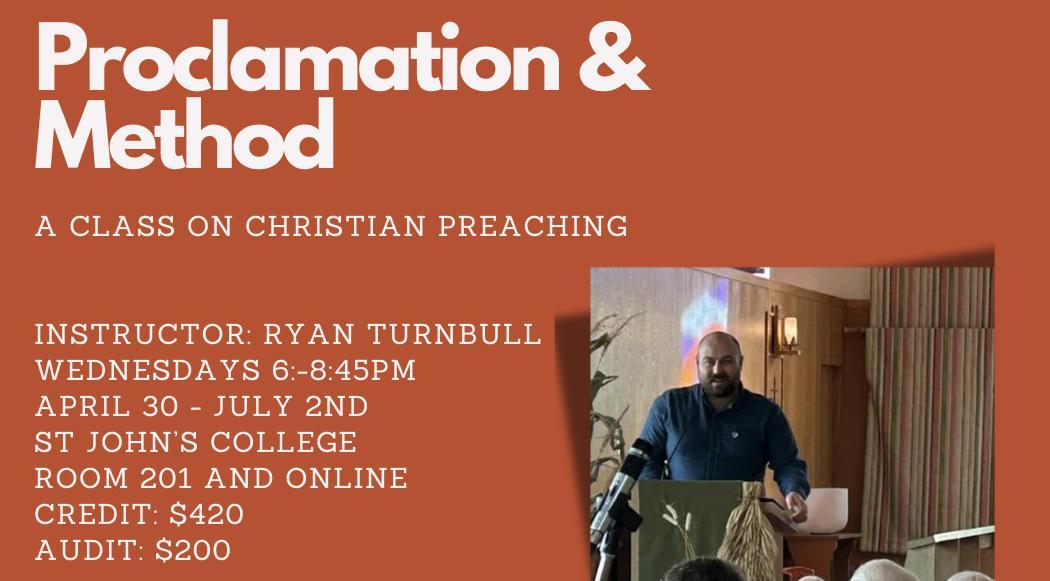



a student in a household of students choosing to live together in Christian community. We had evening prayer times, held a Bible study together, shared the household tasks, and so on.
But after a few months, we also discovered that we could irritate one another, disagree on points of belief and struggle over who was in charge of what. Our common life disintegrated.
In desperation, I began to pray for the person with whom I had the most difficulty. We had stopped speaking to one another, so praying in the absence of daily interactions was a way of seeking reconciliation when it seemed impossible.
What I discovered was that my attitude toward them changed even when they did not. I was less judgmental about them and less likely to talk critically about them with others.
Praying for them made them less of an enemy because prayer was creating within me a space for compassion and love.
Slowly the fractured life of our community began to repair. We were able to come together to deal with issues and resume the activities we shared.
One additional piece of wisdom from Jesus on this: “Do not judge others” (Matthew 7:1). Judging others is one of the steps in making others our enemies. In our current political and social climate, judging others is commonplace.
We judge people we don’t know using little real information about them and then wonder why social tension and hate crimes are on the rise.
As we begin Lent and determine what our Lenten discipline might be, consider trying not to judge others — even those against whom you have a good case. Instead let’s pray for those with whom we disagree or whom we dislike.
If we do that we might be surprised by the resurrection of love and joy in our lives by Easter!
Canon Cheryl Toth is a retired priest in the Diocese of Qu’Appelle still actively involved in congregational life. She is an honorary assistant at St. Paul’s Cathedral.
Published by the Dioceses of Saskatchewan, Saskatoon and Qu’Appelle. Published monthly except for July and August.
Whole No. 292, Vol. 53 No. 7
A Section of the Anglican Journal
SUBSCRIPTIONS
For change of address, undeliverable copies and subscription list updates, contact:
• Your parish
• e-mail: circulation @national.anglican.ca
• Or send to Saskatchewan Anglican, c/o Anglican Journal, 80 Hayden Street, Toronto, Ont. M4Y 3G2
RATES $10 in Canada $17 outside Canada
SUBMISSIONS
Submissions for the May issue must be received by the diocesan editor no later than March 28 All pictures must be sent as JPEGS and 1 MB (megabyte) in size.
CONTACT
INFORMATION
Managing Editor: Jason Antonio SKAnglicanEditor@gmail. com 1501 College Ave Regina, Sask., S4P 1B8 Phone: 306-737-4898
Qu’Appelle: Joanne Shurvin-Martin joannesm@myaccess.ca 6927 Farrell Bay Regina, Sask., S4X 3V4 Phone: 306-775-2629
Saskatoon: Rev. Peter Coolen ptrcoolen@sasktel.net 820 Avenue I South, Saskatoon, Sask., S7M 1Z3 Phone: 306-244-0935,
Saskatchewan: Mary Brown mary1949brown@gmail.com Box 25, Shellbrook, Sask., S0J 2E0 306-922-5159
Advertising agent: Angela Rush saskatchewan.anglican.ads@ gmail.com 905-630-0390
PUBLISHING DETAILS Published from 59 Roberts Place Regina, Sask., S4T 6K5
By Bishop Helen Kennedy
Liturgy is the Greek word for people and work.
“In English it now has two senses: (1) Of all the prescribed services of the church, such as canonical hours, as contrasted with private devotion; and (2), specifically as a title of the Eucharist as the chief act of public worship” as described in the Oxford Dictionary of the Christian Church
One of the biggest differences between mainline churches and the Evangelical churches is the liturgy. Anglicans follow a set pattern of worship. Liturgy is a public action, a ritual action, and a symbolic action.
We participate in the action of the liturgy by responding, singing, listening and joining in the gestures. Liturgy is always in motion; it is something we do, it is not simply a text in a book. Liturgy is a multi-sensory event, involving taste, smell, touch, sight and sound to move and embody the liturgy.
The particular liturgy of the Anglican Church is a four-part drama that brings together a community of people.
In a very simplistic form, there is a gathering, in which we greet each other; the word of God, the Holy Scriptures are heard; there is a response to what is heard as the central response is the Eucharist;
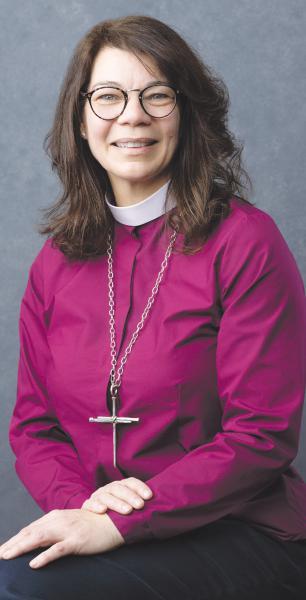
then, better equipped and having encountered God’s grace in the meal, we are sent back into the world to be witnesses of the gospel.
Those four elements are extremely powerful in their simplicity and complexity, signifying the mysterious work of God’s Spirit and the church assembled.
Part of the task for all Christians is, through the work of the Spirit, to find ourselves in the story of God, and to decide for ourselves ways in which we will faithfully respond.
In its sacramental signs and observances, the church takes part in marking the passage of time and events.
Beginning with the anticipation and waiting in hope for the Messiah, through the ministry of Christ to his arrest,
suffering, death, and finally to the Resurrection of life and glory, these disciplines are an act of worship with roots in millennia of history.
As Anglicans we gather to be re-membered into the community, we hear what God has done, and continues to do, in and through our lives as we engage the biblical story in this age. If liturgy is to live it must illumine our lives and give them meaning.
The worship traditions of the church provide help for re-ordering priorities and reclaiming time as a gift, not a burden. Part of that obedience to the life of God is found in the practice of following the lectionary readings. The use of the lectionary serves the unity of the church as it joins Christians around the world in a common identity and a common purpose.
of His ministry, Jesus proclaims that, “ the time is fulfilled, and the kingdom of God has come near.”
The embodiment of response to the anticipation of what God is doing, bears witness to our participation, which is then carried out into the world.
This pattern is a way to mark time journeying through the seasons as a continuing spiral returning to a familiar place, yet a place where life has changed.
Time measures and gives order to our lives. The church certainly knowns chronos, if the service runs 15 minutes over, there is a good chance that the priest will know about it through the feedback of the parishioners.
But the church also knows another kind of time, kairos — biblical time is filled with God’s gracious actions and presence. In the beginning

This is not just, “once upon a time” but perpetually. As Christians we trust the promise and anticipate that Christ, “will appear a second time… to save those who are eagerly waiting for Him” (Heb. 9:28).
So Christians not only mark the days on the calendar, but through liturgical observance we discover in the patterns of our biblical time and the rich meaning of time filled with God, and time fulfilment in Jesus.
Keeping the church liturgical year in kairos time allows the service of the gospel to be in God’s hands.
The worship traditions of the church provide help for re-ordering priorities and reclaiming time as a gift, not a burden.
At other times, church worship speaks to the universality of the church, with Christians around the world, voices join to speak proclamations of faith in reciting the Apostles Creed, and the praying of the Lord’s Prayer. Together these ancient words value the unity in globalized worship.
Therefore, the liturgy is something that binds us, makes us of one mind and focuses our attention.
It is not something that we can play fast and loose with; a much larger community of saints are involved when there are changes that are deemed to reflect the world we now inhabit.
Part of that obedience to the life of God is found in the practice of following the lectionary readings. The use of the lectionary serves the unity of the church as it joins Christians around the world in a common identity and a common purpose. We relinquish personal preferences for the greater goal of common practice. The church is then both local and universal, it is local in that the sermon it is written for that congregation, the prayers are prayed for that congregation, hymns and music reflect the specific congregation’s time and place.
Let us go in peace to love and serve the Lord; thanks be to God.

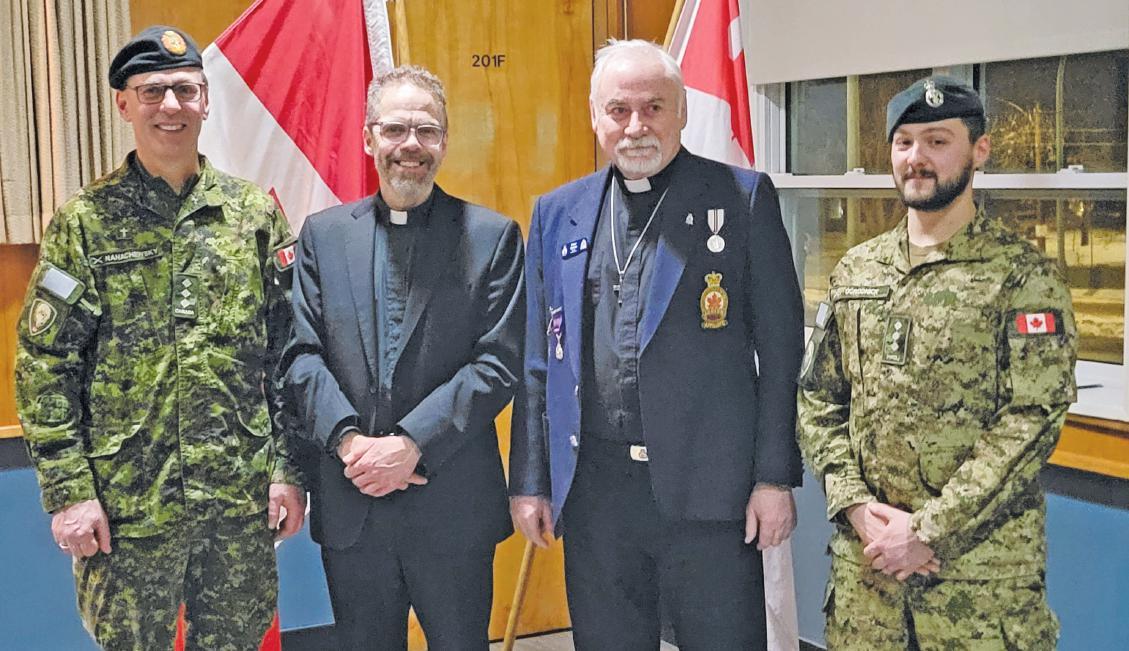
By Rev. Peter Coolen
SASKATOON — On Jan. 15 at the Sgt. Hugh Cairns V.C. Armoury in Saskatoon, Rev. Mark Kleiner, incumbent of Christ Church Parish, was sworn in as a second padre for the North Saskatchewan Regiment.
Christ Church, Saskatoon has, for over 100 years, been the regimental chapel for the NSR and many of the incumbents and rectors of the parish have been padres in the NSR.
Rev. Kleiner began his duties immediately after the ceremony.
g Saskatchewan Anglican online! Did you know you can read current and past issues of the Sask. Anglican online?
Visit www.anglicandiocesesaskatoon.com/saskanglican or on Facebook at www.facebook.com/saskatchewananglican
g Episcopal Election : The episcopal election for the next bishop of the Anglican Diocese of Saskatoon will take place on Saturday, March 8, at the Cathedral of St. John the Evangelist, Saskatoon. Delegates to the Electoral Synod will receive packages of information about the synod before the event.
Diocesan and parish profiles and other information for delegates and those considering applying for this position may also be found on the diocesan web page at www.anglican diocesesaskatoon.com.
“Almighty God, giver of every good gift. Look graciously on your church, and so guide the minds of those who shall choose a bishop for the diocese that we may receive a faithful guide who will care for your people and equip us for our ministries, through Jesus Christ Our Lord, AMEN.”
g Licentiate in Theology Courses
offered by College of Emmanuel and St. Chad and Western Education Collaborative Anglican Network (W.E.C.A.N.): Emmanuel and St. Chad College has been working with the WECAN group to develop a ministry preparation program relevant to the various Anglican contexts in Western Canada.
The local diocesan ministry schools make substantial contributions to the program by offering courses mapped out in the ESC-WECAN Licentiate in Theology handbook.
Whether you are feeling called to do more formal ministry or are drawn to taking certain courses, please contact the person named for the course or courses you are interested in doing.
At the same time, let your diocesan school co-ordinator know your plans. If interested, please review the detailed list of fall and winter course located elsewhere in this issue.
g Saskatchewan Theological Union Courses for 20242025 : The Saskatoon Theological Union has announced the list of course offerings for the coming fall and winter. These course offer -
ings are too extensive to be listed here but information on these may be obtained from Colleen Walker, STU registrar, 1121 College Dr., Saskatoon, S7N 0W3, 639-6381510, colleen.walker@ saskatoontheological union.ca.
g Mentors and Instructors Needed for Em & St. Chad and WECAN Licentiate in Theology : Mentors and instructors for the students of our diocese enrolled in the Emmanuel and St. Chad College and the Western Education Collaborative Anglican Network's Licentiate in Theology.
For your information, a student may be in the L.Th. program for three to five years, depending on their life context and other responsibilities in their lives.
To maintain some continuity, we would like mentors to consider being in this role for two years. Longer would be appreciated and acceptable.
Retired clergy would be warmly welcome to serve as mentors as well as being willing to participate in the mentor Orientation. Mentors do not need to be clergy or even incumbent clergy.
People with teaching experience, who are respected members in
their faith community with a knowledge base relevant to the one of 12 courses required in the L.Th. could serve as instructors. If interested in being either an instructor or mentor, or both, please contact the Rev. Dr. Trish McCarthy at trish. mccarthy@saskatoon theologicalunion.ca.
g Christ Church Anglican, Saskatoon : Celtic Eucharist, Tuesday at 7:00 p.m.; Community Free Supper, 5:00 to 7:00 p.m., (once per month, usually third Tuesday, 5-7 pm. check for dates and times); Community Coffee House, every Wednesday, 10:00 a.m. to noon.
Also, Nutflakes Videos (video lending library), Friday and Saturday 11:00 a.m. to 2:00 p.m.; Free Bread Program, Friday mornings; Men’s Breakfast the first Sunday of each month, a free breakfast for all provided by the men of the parish, 9:30 to 10:30 a.m.
g Courses at the Refinery : The Refinery at Emmanuel Anglican Parish, Saskatoon is offering a series of courses during the Winter 2024 season on a variety of subjects including
painting and various other art media, Zumba, and various spiritual and meditative modalities.
The “Painting Table” is held in the lower parish hall, from 7:00 to 8:30 p.m., the first Wednesday of each month. All art materials are supplied. For more information on the various courses offered or the “Painting Table” or to register, please contact the Refinery at: www.emmanuelrefinery.org or 306 653-3549.
g Appointments: It has been announced by the Rev. Dr. Trish McCarthy that Elliot Luo will be taking over the co-ordination of the Saskatoon Anglican School of Discipleship.
g To be included in a timely manner, notices should be supplied to the associate editor by fax, email or “snail mail” by the end of the month, one month before the month in which the insertion is desired (i.e. February entries will be in the April issue).
Detailed and longer texts of events will not be included in this section, but should space allow, could be the subject of articles and notices elsewhere in the Saskatchewan Anglican.

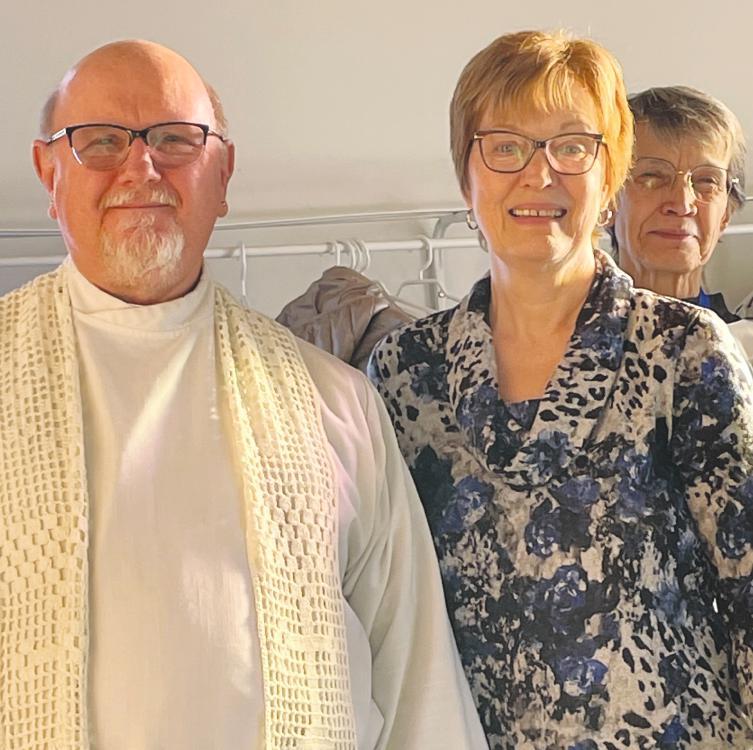
Continued from page 1 these vacancies. Each of these congregations have excellent lay readers who are committed to filling the gap.
Members of the parish of Leask/Shellbrook bid farewell to the Rev. David Butorac and his wife Emily and daughter Ava Marie at the end of December. He is moving to Nacogdoches, Texas, as rector of Christ Church. He was appointed priest in charge of St. Andrew’s, Shellbrook and all Saints, Leask in March 2023.
Even though he lived in Prince Albert and was priest for St. Alban’s Cathedral and St. George’s Church, he attended the ministerial meetings in Shellbrook, as well as doing a service at the seniors’ home once a month and participated in many liturgical events in Shellbrook, Canwood and Leask including taking part in the combined VBS program. His last service was Christmas Eve in St. Andrew’s.
The Rev. Tim Morgan was in Shellbrook visiting his friends Bev and Dale Ledding and offered to conduct a Holy Communion service in St. Andrew’s while he was here. At present, he is the minister at St. Oswald’s Parish in Surrey, B.C. He has been an active and devout member of

the Anglican Church his whole life and celebrated his 31st anniversary of ordination to the priesthood. However, he was only here for a week, but he did promise to come back in the summer.
When a parish has a vacancy the Synod Office for the diocese will assign a priest to cover the position. We were blessed to have the newly elected 13th Bishop of the Diocese of Saskatchewan, the Right
Rev. Rick Reed, come to our church on Jan. 14.
This was his first visit to St. Andrew’s as their bishop. We look forward to more visits from either the bishop or other available clergy. Usually, a Holy Communion service would be held the second Sunday of the month. The congregation will still have a communion service once a month but on a “to be announced basis.”
Continued from page 1 formation that happens here has impacted the church across the country,” he stressed.
Recalling his own time as director, from 1994 to 1999, Jesson listed a range of initiatives, including the ecumenical dialogue undertaken by a local committee that created bulletin inserts that were shared in the thousands.
He also described the personal effect of de Margerie’s support for inter-church families, made up of couples from different Christian traditions living out their marriage ecumenically, as well as the effect of the centre’s ecumenical education and formation initiatives, such as a Summer Ecumenical Institute that ran for many years.
Another former director, Rev. Jan Bigland-Pritchard, recalled the effect of the 2008 “Remembering the Children” national tour, which was held in Saskatoon largely because of the relationships between the Christian churches, thanks to the Prairie Centre for Ecumenism.
That historic 2008 event laid the groundwork for the Truth and Reconciliation Commission that followed a few years later.
“The reason we could do that and do it well, was because the network was already there. The people already knew each other and could move into high gear without a lot of formalities,” BiglandPritchard said noting it was “something which I think was important to the history of Canada.”
The Prairie Centre for Ecumenism has been a visible sign of the work for Christian unity over the past 40 years, said Bishop Emeritus Allan Grundahl of the Evangelical Lutheran Church in Canada.
“It is a visible sign that many people of different backgrounds and many kinds of Christian faith can work together and appreciate each other, and it does help to have an almighty God that can help us all be together!”
Fr. Kevin McGee, vicar-general for the Roman Catholic Diocese of
brought
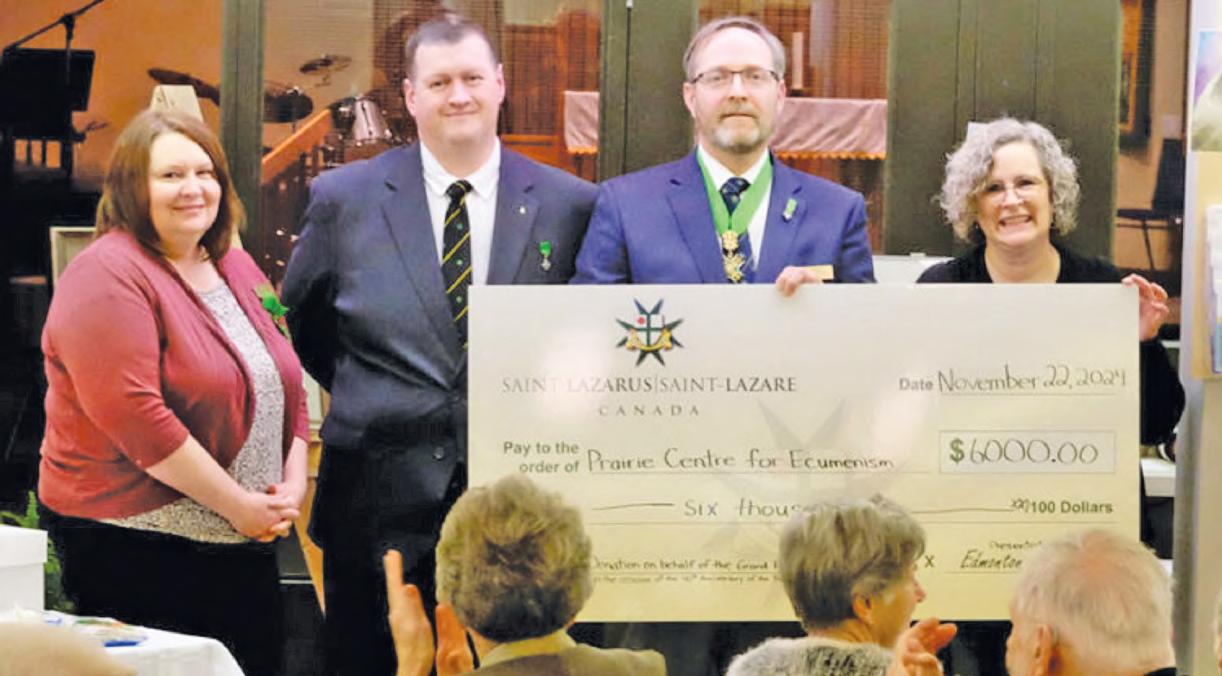
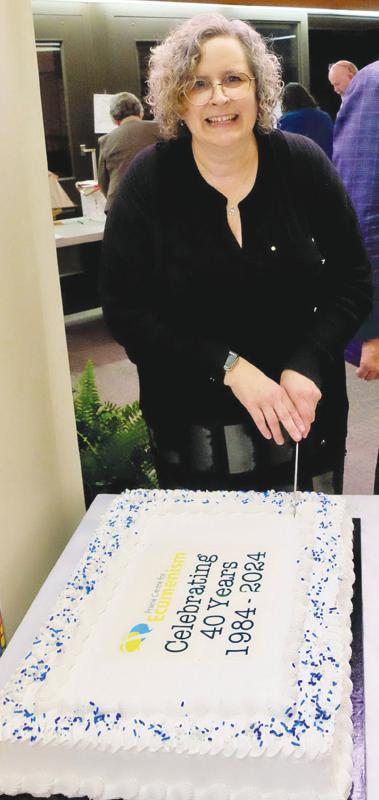
Wood, director of the Prairie Centre for Ecumenism, cuts the cake during the 40th anniversary celebration held Nov. 22.
greetings from Bishop Mark Hagemoen, sharing his own personal witness of ecumenical shared outreach, with St. Mary’s Catholic Parish currently partnering with the Salvation Army to open its hall as an overnight warm-up shelter for those in need.
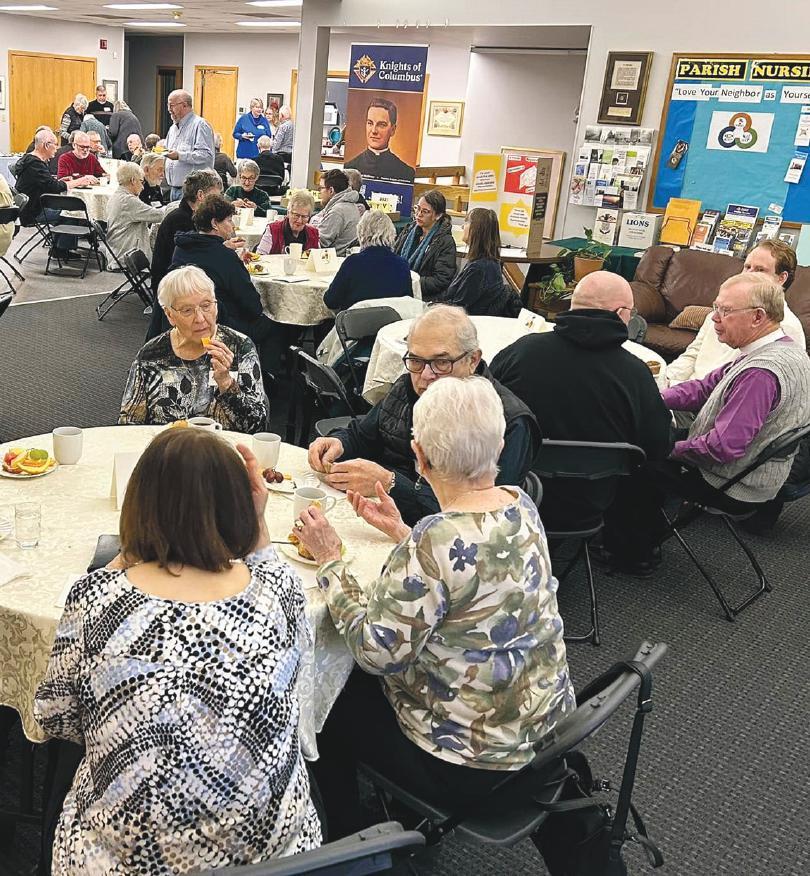
“For me our hearts do not beat more closely than when they are beating together with the heart of Jesus, and Jesus has a love for the poor,” said McGee. Reflecting on the future of the PCE, chair Mary Nordick noted, “We have barely begun. We’ve laid the groundwork for
working together, now we come to the more difficult questions.
"The time to come together — knowing each other, respecting each other — continues, always with the hope that we are following the Lord’s request that ‘All would be one,’” she said.
“Hopefully the Prairie Centre for Ecumenism will be around for another 40 years.”
Bigland-Pritchard added, “Working out the vocation of ecumenism looks different now that it did 40 years ago. But the call to know each other Continued next page

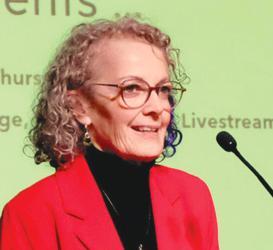
Rev. Dr. Sandra Beardsall was the guest speaker for the 2025 De Margerie Series for Christian Reconciliation and Unity, with events held in Saskatoon and Regina. Her lectures were also live-streamed online.
Continued from page 6 across all kinds of divides, and to work together to seek the Kingdom of God through His son Jesus Christ, in the power of the Holy Spirit, remains. “
This year’s Week of Prayer for Christian Unity included the De Margerie Series for Christian Reconciliation and Unity.
The theme of the 2025 De Margerie Series was “Here Comes Nicea,” with guest speaker Rev. Dr. Sandra Beardsall considering ecumenism in light of the 1,700th anniversary of the Council of Nicaea. Two livestreamed lectures and two in-person workshops were hosted in both Regina and Saskatoon.
The Anglican Diocese of Saskatoon is represented on the PCE Board by Rev. Canon Marie-Louise Ternier and lay rep MaryJean Dewald.
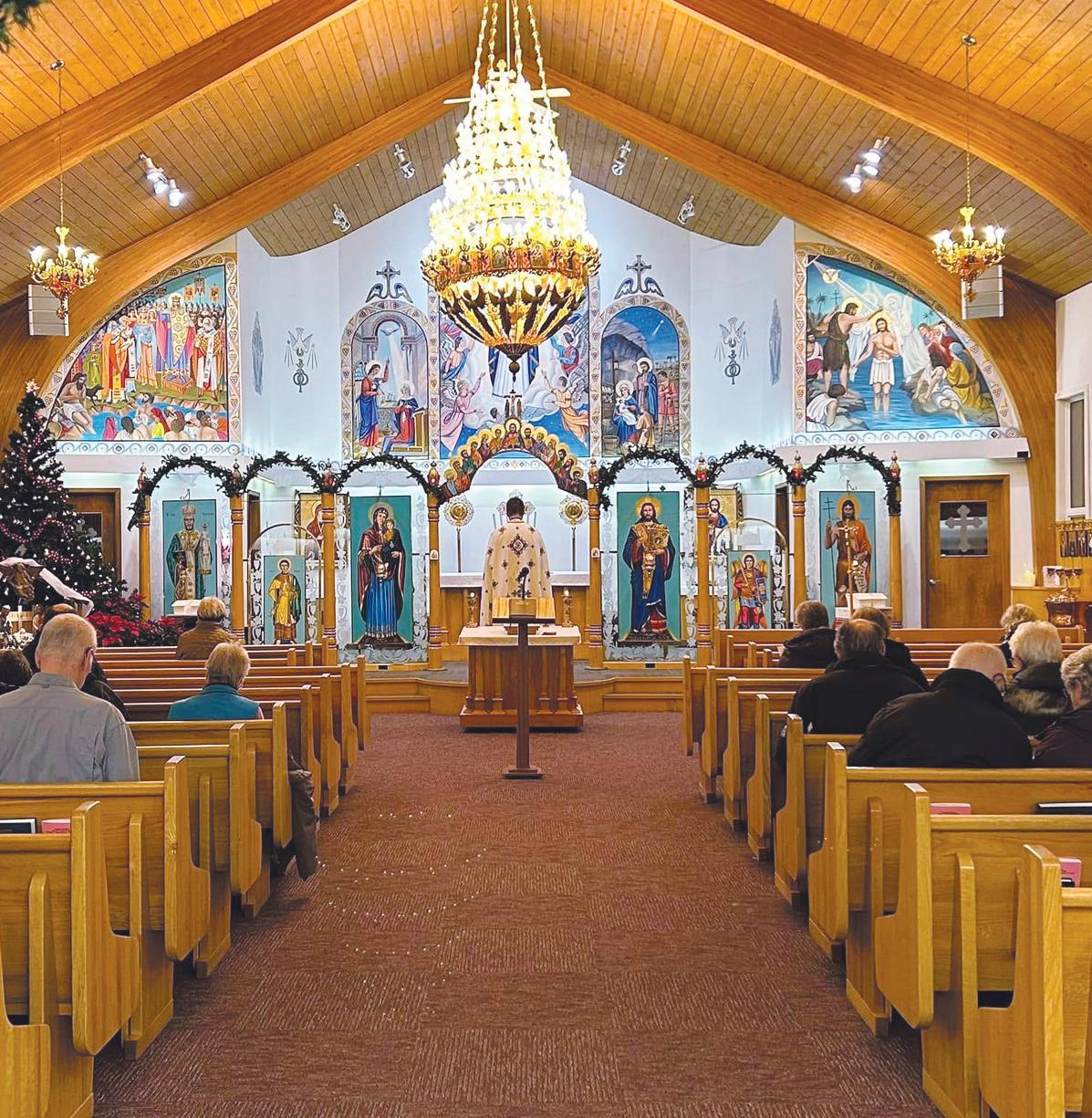
By Rev. Gene Packwood
As the church calendar rolls on each year, Collects come and go. We hear them prayed out loud, usually on Sunday mornings.

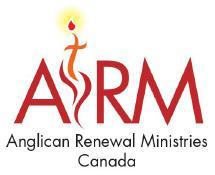
Some of us might also see the texts in our bulletins, but there is little opportunity to reflect on and appreciate what is being prayed because, just as the calendar rolls on, so does the liturgy, and we won’t hear that collect again for another year, or even longer in The Book of Alternative Service’s (BAS) three year cycle of propers in Lent, for example.
Unless we are praying the daily offices, that is, which would cause us to repeat Sunday’s Collect daily for the week (except special times like Holy Week when there is a special daily Collect.
Not that I’m complaining. Liturgy literally means “the work of the people.” Therefore it’s not something done to or for us. There is some personal effort required. It is something we are called to “do” by God’s grace, through Jesus Christ and in the power of the Spirit.
Before we proceed, a note about the word “Collect” as a liturgical prayer. As in its regular English usage, it has the sense of gathering together, as in gathering the faithful in worship and as a collective prayer that gathers all our prayers into a particular focus for the day and season in the church year.
Archbishop Thomas Cranmer developed the form and pattern for us Anglicans. (You can find more info at https:// seedbed.com/the-anatomyof-a-prayer-using-thecollect-in-worship/ and https://anglicancompass. com/the-collects/).
The Collects for the First Sunday in Lent in both books give us an excellent spiritual guide: O LORD, who for our sake didst fast forty days and forty nights: Give us grace to use such abstinence, that, our flesh being subdued to the Spirit, we may ever obey thy godly motions in righteousness
who lives and reigns with you and the Holy Spirit, one God, now and for ever. (BAS, p286)
and true holiness, to thy honour and glory; who livest and reignest with the Father and the Holy Spirit, one God, world without end. Amen. (BCP, p140) Almighty God, whose Son fasted forty days in the wilderness, and was tempted as we are but did not sin, give us grace to discipline ourselves in submission to your Spirit, that as you know our weakness, so we may know your power to save; through Jesus Christ our Lord,
God’s grace working in us as we — in a suitably disciplined manner — observe a holy and abstemious Lent by selfexamination, penitence (repentance), prayer (daily offices in those same prayer books, perhaps?), fasting, almsgiving (selfdenial), reading and meditating on the Word of God (BCP, p612, BAS, p282) — all while subdued and in submission to the Holy Spirit — would result in some growth in righteousness, true holiness and knowing and enjoying God’s power to save, don’t you think?
I’ve collected all the
additional blessings and growth that can be ours if the LORD were to grant the petitions in the rest of the Lenten collects should we pray them earnestly! Added to the aforementioned righteousness, true holiness etc., we would also be:
1) Defended from all adversities which may happen to the body, and from all evil thoughts which may assault and hurt the soul (BCP, p143)
2) Strengthened by his grace and changed into his likeness, from glory to glory (BAS, p288)
3) Defended against all our enemies (BCP, p145)
4) Strengthened to follow Christ, our pattern and our hope (BAS, p290)
5) Mercifully relieved of the consequences of our evil deeds, by the comfort of God’s grace. (BCP, p147
6) Given the true bread whereby Jesus would more truly live in us, and we in him (BAS, p292)
7) Governed and preserved evermore, both in body and soul; through Jesus Christ our Lord. Amen. (BCP, p148)
8) Transformed by the power of his victorious cross (BAS, p295)
Defended, strengthened, relieved, comforted, governed and preserved in Jesus. Fruit of a holy Lent subdued and submitted to the Holy Spirit. What a blessed spiritual state in which to celebrate and enjoy Easter this, or any other, year!

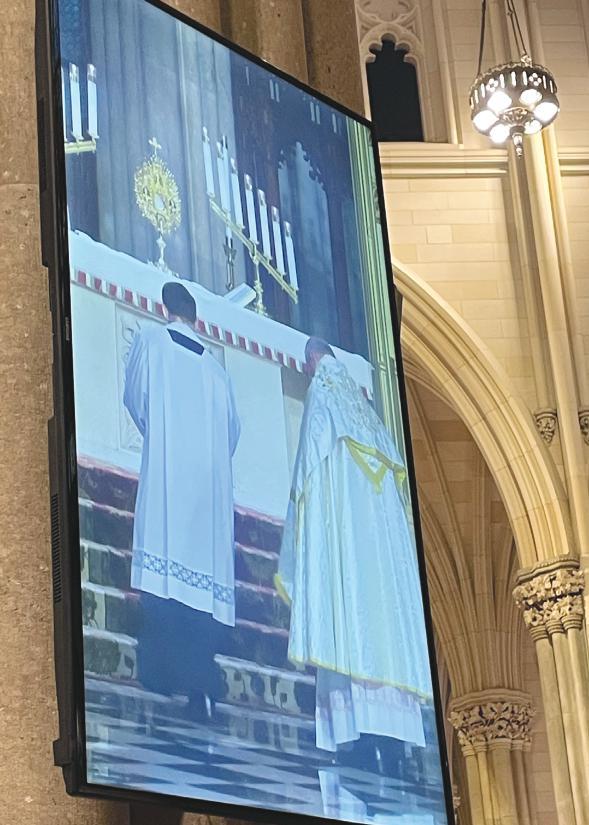
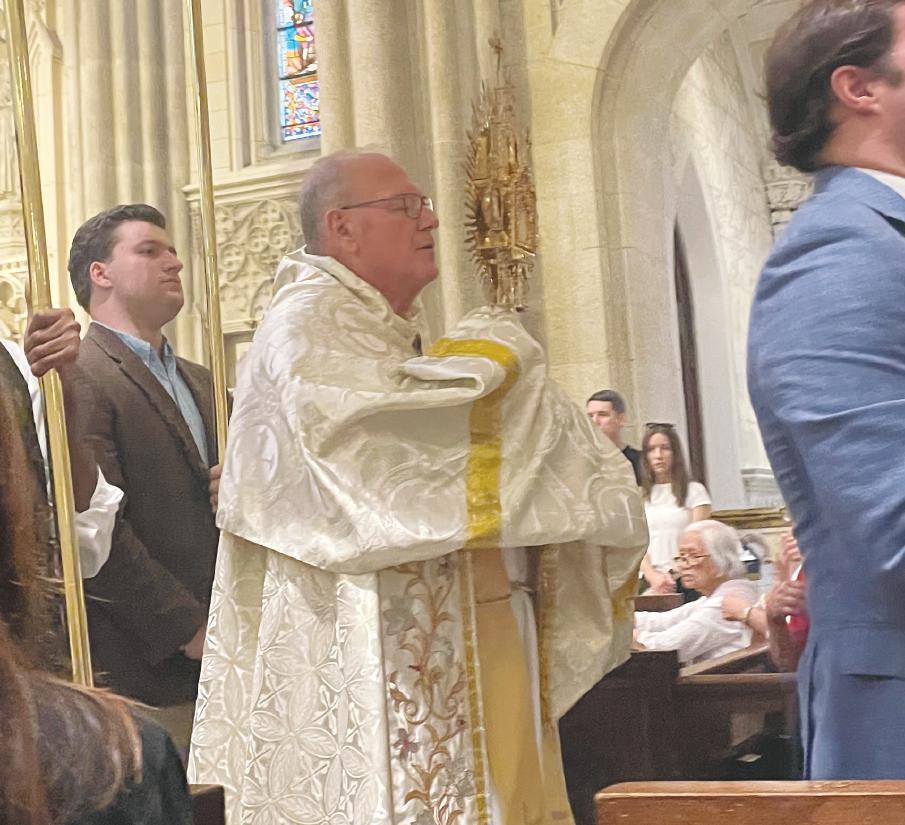
Cardinal Timothy Dolan holds a "monstrance," a sacred vessel that exposes the Blessed Sacrament while being carried in a procession. It is cross-shaped with a circular window in the middle, surrounded by a frame with rays light the sun.

By Mary Brown
PRINCE ALBERT — I was in New York City last year and one of the sites I had on my list of must sees was St. Patrick’s Cathedral. We (my sister-in-law and I) went to mass, which turned out to be the Feast of Corpus Christi.
The Feast of Corpus Christi is a festival of the Roman Catholic Church It is celebrated in honour of the real presence of the body of Jesus Christ in the Eucharist It is traditionally celebrated on the Thursday following the Solemnity of the Holy Trinity. It is a movable feast and is observed on the Thursday (or, in some countries, the Sunday) after Trinity Sunday
The cornerstone of St. Patrick’s Cathedral was laid in 1858 and was opened for worship in 1879. In the 1800s this site was thought to be near-wilderness and was considered too far outside the city.
The Archbishop, at that time, John Hughes, believed the site would be the heart of the city some day. It was paid for by the contributions of thousands of poor immigrants and by the largesse of 103 prominent citizens who pledged $1,000 each.
Cardinal Timothy Dolan was the officiant for the mass. He delivered an invocation at the inauguration of Donald Trump. He is the cardinal for the New York Archdiocese. We couldn’t have picked a better day to go to church.
This service included accolades to the religious Brothers and Sisters who celebrated their 50-year jubilee. It also included a procession at the end of the mass of the Blessed Sacrament.
For those who are wondering, a monstrance is a sacred vessel designed to expose the Blessed Sacrament for carrying it in a procession. It is in the form of a cross with a circular window in the centre, surrounded by a silver or gold frame with rays like the sun.
Cardinal Dolan held up the cross and processed through the church. For someone who doesn’t go to church regularly, except with me, my sister-in-law certainly experienced quite the occasion.
In his sermon, Dolan recounted a story of his trip to Haiti after the earthquake in 2010. He left New York with a plane full of supplies for Haiti where they met 300 Catholic Relief workers. When he
asked these tired, hungry, dirty people if there was anything he could for them, they earned his admiration when they said to say mass for them.
In the Archdiocese of San Fransico, a convent was established for the Sisters of Charity. The people in the city pulled together and furnished the house with all the necessary appliances and furnishings they would need. Mother Theresa came to San Francisco for the opening of the convent and much to everyone’s surprise, the next day they found all the carpeting, furniture, appliances, etc. on the front lawn.
Mother Theresa was heard to say “We don’t need much,” and “We only need two things: the altar and the tabernacle.” As the Cardinal said, we need a revival and renewal of the Holy Eucharist.
The inside of the cathedral is magnificent. There are many tourists milling about in a respectful manner.
The centre pews were roped off for those who were at the church attending mass, as there were quite a few services on a Sunday and weekdays. If you ever go to New York City, put it on your list of what to see.
By Rev. Canon Marie Louise Ternier
Christmas is over for the secular world, although in the church world, Christmas lasted well into January. Like many people, Jim and I spent lovely quality time with our adult children, their loved ones and little ones.
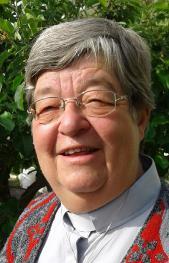
The holy season adds spice to family intensity like none other, both for good and for ill. Broken families and those without families feel their pain more intensely at this time of year. Relatively intact families, patching up minor relational bruises and blemishes, huddle together around turkey dinners, way too many sweets, and popular family pastimes.
After all, it’s tradition we are told.
But some things considered “tradition” by parents do not seem to carry over into the next generation. Despite the fact that all three of our children were raised in a home that exuded a joyful and deep personal faith in Jesus within the family of God called the Church, none of our children came close to a Christmas church service. Despite claims that some things are “tradition,” in the religion department our children reflect the secular nature of their generation all too candidly. And because it’s Christmas, I’m more intensely preoccupied with this painful reality than at other times of the year.
Moreover, finding my deepest joy in professional church ministry makes my children’s absence in church that much more poignant.
Before I go on, let me make one thing crystal clear. I love my children and their loved ones immensely, and I am incredibly proud of the beautiful human beings they have become and are raising.
Each of them displays the best s/he can be in this world; they are confident and competent, respectful and justice-seeking, hardworking and generous, loving and committed. I stand in awe at their joyful witness in the world, each with their own unique gifts and talents.
Through my faithcoloured eyes, however, they are who they are









because of Jesus. They display the best of Christian virtues and values in how they live their lives, yet they do not connect these qualities to any religious/spiritual origins.
Now one could argue that Christianity does not have a corner on honourable virtues and life-giving values. However, a recent opinion-piece in the New York Times dares to challenge such historical and religious amnesia. According to its writer, the coming of Jesus changed the very notion of what it means to be human:
For Christians, God is not distant or detached; he is a God of wounds. All of this elevated the human experience and laid the groundwork for the ideas of individual dignity and inalienable rights ( The Christmas Revolution, Peter Wehner, New York Times, Dec. 25, 2015).
I found Wehner’s article helpful in articulating the reasons why my children, and many of their generation, cannot see the spiritual woods through the religious trees.
If we add the shameful laundry lists of ecclesial trespasses (showing off its humanity in its flaws, scandals and sins) and a comprehensive cultural distrust of traditional authority structures both religious and secular, it is no wonder that the younger generation is not trusting traditional religious institutions for inspiration and guidance, the family of God in whom to ground their values and personal identity/belonging.
That does not excuse the distrust nor indicate alternatives, but it does provide reasonable reasons.

Wehner asserts that today’s emphasis on human rights, today’s secularity and democratic systems are in fact the ironically successful outcome of the Christian message.
Quoting the French philosopher Luc Ferry, he says, ”Christianity was to introduce the notion that humanity was fundamentally identical, that men were equal in dignity — an unprecedented idea at the time, and one to which our world owes its entire
democratic inheritance.”
God-given rights
Do my children and their contemporaries realize that the freedoms they enjoy, the personal dignity they claim, the “rights” they take for granted, are gifts from God that have come into the world through Jesus? Do they realize on whose shoulders they are standing (and I don’t mean their parents)?
I’m willing to concede that secularity is Christianity’s adolescent child, as another beloved writer asserts in ways that resonate with Wehner’s article:
Secularity is not the enemy; it’s our own child, sprung from JudeoChristian roots. Like any adolescent child, suffering from an understandable youthful grandiosity, it’s not bad, just unfinished. Our relationship to it shouldn’t be adversarial but one of solicitude.
The “soil” of secularity is defined by Jesus in the parable of the Sower — some ground is good, some hostile, some indifferent — but the fact that some ground is hostile or indifferent does not absolve us from the mandate to keep on sowing ( Missionaries to Secularity, Ron Rolheiser). Why is secularity often so overly critical towards Christianity? For the same reason that adolescents can be bitter and overly critical towards their own parents, namely, that adolescence is often immature and grandiose. But an immature, grandiose adolescent isn’t a bad person, just an unfinished one (Secularity: A Mixed Bag of Life and Death, Ron Rolheiser).
Exiled community OK, does this mean that we are to assume that the majority of the younger generation remains immature at the spiritual/religious level? That seems to give them too little credit for finding their own ways to God, ways that may contain just as much integrity as those of previous generations. And I admit that I too reap great benefits from today’s modern Western society while on the negative side, however, I shiver with Rolheiser as
Continued next page

The church of St. John the Baptist served the community of Gull Lake for more than 100 years, before it was deconsecrated in December 2024. Photo contributed

Our name has changed. Our work stays the same.
After two years of discernment and consultation, PWRDF’s members* have approved a new name. Alongside Hope emphasizes themes of partnership, accompaniment, community and teamwork that have always exemplified the way we work.
With its tagline — Anglicans and partners working for change in Canada and around the world — Alongside Hope honours the legacy of PWRDF as an agency of the Anglican Church of Canada, and it will carry us forward into the future.
As we walk alongside our partners and many supporters, listening and sharing with one another, we embrace and embody the hope of a truly just, healthy and peaceful world.
Scan the QR code to view a video about our new name and read our list of Frequently Asked Questions, or visit pwrdf.org/our-new-name
* The PWRDF Board of Directors, Diocesan Representatives and Youth Council comprise the voting membership.
By Joanne Shurvin-Martin
GULL LAKE (Qu’A) — St. John the Baptist Anglican Church served Gull Lake and area for more than a century before it was deconsecrated Dec. 4, 2024.
The first Anglican services in the town were held in private homes, beginning in 1909. The church was built on Rutland Avenue in 1912, with the first addition 14 years later.
The most significant change was in 1984, when the building was jacked up and a proper basement was added, with a kitchen, hall, two washrooms and two staircases, in addition to the furnace area and storage room.
Above ground, an addition expanded the floorplan and created a new entryway. At the same time, new siding was put on the whole building.
Many clergy served St. John over the years, including several who later became well known in the diocese and beyond.
The late David Ashdown served Gull Lake before he became Bishop of Keewatin and
Metropolitan of Rupert’s Land. The late Rev. Carol Adamson also served the parish early in her ministry, as did now Archdeacon Catherine Harper.
When the parish could no longer support a fulltime priest, lay people led Sunday services, with visiting clergy conducting services approximately once a month.
The last service in the building, before the deconsecration service, was March 1, 2020.
On Dec. 4, 2024, Bishop Helen Kennedy led midday prayers and included part of the liturgy for the Thanksgiving on the Anniversary of a Parish. Archdeacon Catherine Harper, Synod Office, and Rev. Jesse Miller of Maple Creek attended the service, along with clergy from other denominations in Gull Lake.
The former church building has been sold and is now an antique shop. The beautiful Hammond organ is still in the building.
Editor’s note: Thank you to Sheila Peters who provided much of the information for this article.
... People are less religious and more secular in their worldview
Continued from page 10
I recognize its elements of death. I can only pray furiously that the young be protected from the deathdealing deviations while they carve out a winding spiritual path.
As a faith community we are in exile: “from the power, possessiveness, and prestige of the past — but we should remember that all transformation happens in exile, because that is the only time God can get at us. We need to stay with the pain, the exile, the kenosis, and hold the tension long enough until it changes us.” ( Missionaries to Secularity, Ron Rolheiser). Despite all the reasonable reasons and explanations, however, I continue to grieve the
fact that Jim and I cannot share explicitly with our children the love of God in Jesus Christ that gives such depth and joy, meaning and purpose to our lives.
We are told that human spiritual hungers never change; only how we still those hungers changes. I pray to God to protect each one of my cherished loved ones, and entrust their life path to God in Christ Jesus, whether they will ever explicitly acknowledge that or not. I pray that God grant me the grace to live with this uncertainty, and that my grief over their lack of external faith practice will never erode the strong and deep love I feel for each one of them.
By the Rev. Dr. Laura Marie Piotrowicz
Editor’s note:
The Rev. Dr. Laura Marie Piotrowicz is rector of The Cathedral of St. John the Evangelist, Saskatoon and acting co-chair, Ecumenical Women at the United Nations.

SASKATOON — Each year, around International Women’s Day (March 8), the United Nations hosts a two-week-long Commission on the Status of Women (CSW) at UN HQ in New York.
The CSW is an intergovernmental body dedicated to the promotion of gender equality, and has been active since 1946. This year, the CSW will focus on the 30 th anniversary of the Beijing Declaration and Platform for Action, a 1995 document that identified
12 key areas (including concrete action plans) for countries to implement movement towards equality. *
During this commission (March 10– 21), members of non-governmental organisations (NGOs) also gather in New York and online to participate in events of solidarity, education, and advocacy.
Often the largest gathering of civil society at a UN commission, this year more than 12,000 members of ECOSOC-accredited NGOs have registered to participate.
The Anglican Communion is one of the NGOs that will be present at CSW; with delegates from around the world, led by Martha Jarvis (the Anglican Communion’s permanent representative
to the UN) and Mandy Marshall (project director for gender justice).
This year’s delegation includes many youths, as well as some of us who have attended for years, from all over the world, bearing a diverse scope of expertise and experience.
We connect with other faith-based organizations, collaborating and networking to enhance our awareness and efficacy.
These include the ACT Alliance, the World Council of Churches, and Ecumenical Women at the UN, a coalition that offers advocacy training, solidarity, national mission visits, and daily worship. (EW’s social media is active during CSW and you can find us on Facebook and Instagram).
Our baptism compels us to strive for the dignity of all. The call in Micah 6:8 inspires us act with justice, kindness, and mercy. Ephesians 5:11-13
compels us to refuse to look away others' suffering to expose it and work against it. Jesus teaches his disciples to dismantle systems of oppression and domination, and to use power to enhance others’ well-being (see Matthew 20:26-28).
At CSW, we trust that together we are upheld as we navigate challenging realities, share stories of hope and resiliency, and are inspired to apply our faith focus to local action that will make a difference.
We bring with us our experiences from home, and learn from our contexts. We recognise the intersectionality of global issues and local applications. We participate boldly at the UN, and forge relationships that span time and distance and language.
We also know that while we are engaging in these events, and
nurturing ideas to bring home, that we are being upheld in prayer by our communities. So I invite your prayers for this CSW: For those who endure violence, may we surround them with support. For those who perpetuate violence, may God change their hearts. For those who strive to break the cycle of violence, may they know their work to be valued and important.
For all of us who seek God, may we demonstrate leadership in extending dignity to all.
* The 12 key areas are: Women and Poverty, Education and Training for Women, Women and Health, Violence Against Women, Women and Armed Conflict, Women and the Economy, Women in Power and DecisionMaking, Institutional Mechanisms, Human Rights of Women, Women and the Media, Women and the Environment, The Girl Child.
By Rev. Christine Burton
With the beginning of March, we enter into the liturgical season of Lent.
While Lent is intended to be a time of penitence, self-reflection and spiritual growth, for me personally, and for many I know, most of our attention seems to be on the penitence and self-denial side of things.
This, I think, is a function of an historic tendency to view God’s love as conditional, and a sense of guilt about “what we have done, and what we have left undone … .”
A re-focusing on selfreflection and spiritual growth can lead us to a realization that stewardship should be part of our Lenten prayers and practices.
Stewardship is the idea that humans are responsible for the world and its peoples, including ourselves, and that we have an innate responsibility to care for every aspect of God’s creation.
While it’s true that Lent is commonly associ-
ated with giving up stuff, a spirit of stewardship encourages us to view Lent as more active and positive — more selfless actions than self-denial.
How can stewardship be a focus of Lent? While stewardship can be expressed in many ways, two common understandings are environmental stewardship and spiritual stewardship, and we’ll explore a few ideas here.
Environmental stewardship starts with an understanding of the Earth and all life upon it as a gift from God, to be tended in such a way as to hand it on unscarred to future generations.
Consequently, we are to care for its natural resources — animal, vegetable, and mineral, as it were — in a way that is less “exploitative,” less focused on trying to monetize those resources, in favour of seeking ways to cultivate those resources for the benefit of all, including coming generations.
This Lent, we can care for creation by considering how we currently show our concern for the world and all life on it, and by
looking for new ways to protect and heal the Earth.
Spiritual stewardship, as with all things spiritual, may look easier — think, pray, reflect — but such actions require us to examine ourselves with a critical, albeit forgiving, eye, and making changes in our very selves.
It involves growing one’s faith and helping others grow theirs.
To grow our own faith, we are pointed towards considering the Word, both in its original context and authorship, and in light of our contemporary realities.
All Scripture is breathed out by God and profitable for teaching, for reproof, for correction, and for training in righteousness (2 Tim 3:16); So faith comes from hearing, and hearing through the word of Christ (Rom 10:17).
Giving such attention to Scripture, whether through personal reading, attending Bible study or additional worship services, requires us to steward our time — choosing between competing priorities or desires, and making a conscious deci-
sion to put God ahead of the sometimes easier and more appealing options of watching TV, scrolling social media, or other temporal pleasures.
Spiritual stewardship and growth of our faith also involves considering how we spend our time, talents, and treasure in service to others.
As we are reminded by the well-known teaching set out by St. James, What good is it, my brothers, if someone says he has faith but does not have works?
Can that faith save him? If a brother or sister is poorly clothed and lacking in daily food, and one of you says to them, “Go in peace, be warmed and filled,” without giving them the things needed for the body, what good is that?
So also faith by itself, if it does not have works, is dead. But someone will say, “You have faith, and I have works.” Show me your faith apart from your works, and I will show you my faith by my works… so faith without works is also dead (2:14-18, 26b).
Such works may include:
Feeding the hungry – directly or indirectly though donations to food banks or by advocating for better social programs
Teaching, whether in Sunday school, or in adult education or outreach programs varieties that help develop skills and independence
Visiting the sick, lonely, or in need at home, in “hospital” or in “prison,” whether those hospitals and prisons be literal or metaphorical
Freeing the oppressed, whether through support for Amnesty International or other programs supporting freedom in emerging democracies, working for justice and reconciliation with the indigenous peoples of Canada, or working to free ourselves from our own biases and prejudices
Lent is a time to prepare for the Triduum (Holy Thursday, Good Friday, and Easter) through prayer and spiritual discipline, such as fasting, and almsgiving, which may be done through selfless acts of stewardship. How will you steward yourself this Lent?